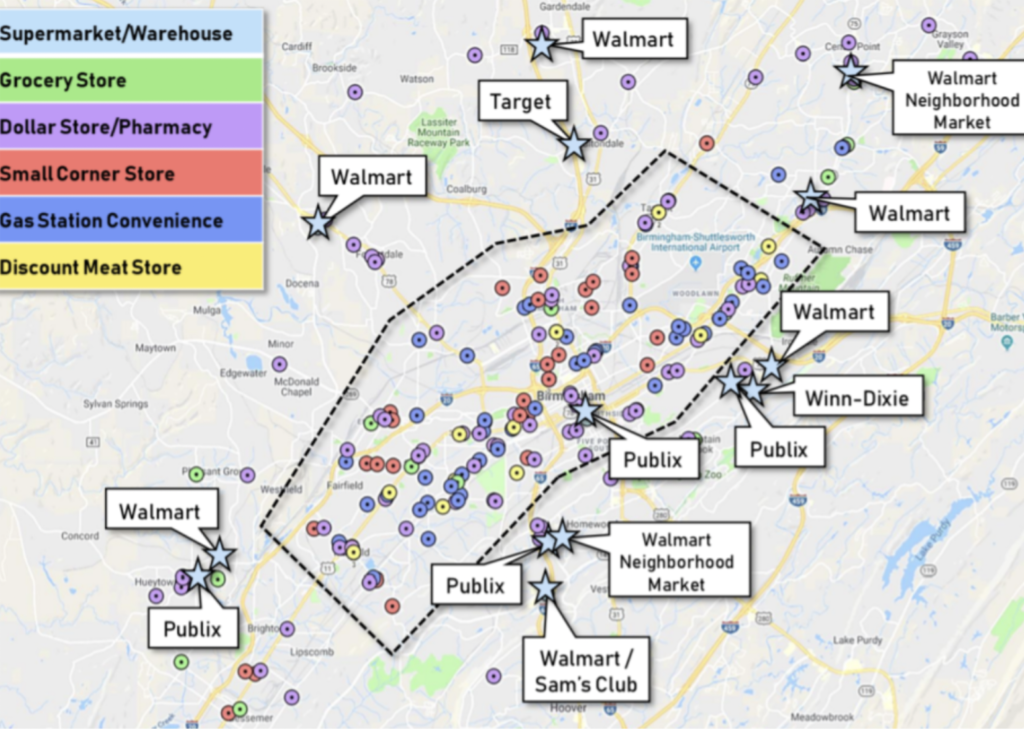What Is A Food Desert?
A food desert is a geographical area where it is difficult to buy healthy, nutritious food at an affordable price. Food deserts include areas where travel to a grocery store is difficult, and in areas where healthy food may be available, but at an unaffordable price.
Birmingham has many areas that are considered food deserts.
Learn more: What Are Food Deserts?
Fast Facts About Food Deserts in Birmingham
- 150,000 people in Birmingham live in a food desert.
- This is 69% of Birmingham’s population living in a food desert.
- In each of Birmingham’s nine city council districts, there is at least one food desert.
Why Are There Food Deserts In Birmingham?
Food deserts are a socio-economic problem that tend to occur in specific neighborhoods as a result of a lack of proper aid and investment in that neighborhood.
Food deserts are found in Birmingham in neighborhoods with high poverty levels. These areas have lower access to transportation, making it more difficult to get to a grocery store.
Food deserts are also disproportionately found in areas where the residents have lower levels of education and high unemployment rates. Areas with food deserts also have high rates of abandoned or vacant buildings.
Food deserts are more likely to occur in primarily Black communities in Birmingham. A national 2014 study showed that even in areas of equal poverty, Black communities are less likely than communities of other races to have access to grocery stores and fresh food (Bower et al. 2014).
Many argue that the areas facing food deserts today are a direct result of redlining, discriminatory home loan lending practices, in the 1930s.
Where Are There Food Deserts In Birmingham?
Areas in Birmingham with low-income and low-access to stores, as well as low vehicle access are food deserts.
This map provides an overview of where food deserts are located in the city of Birmingham and surrounding areas. Any area showing orange or green is a food desert. All of these areas are low-income areas as well.
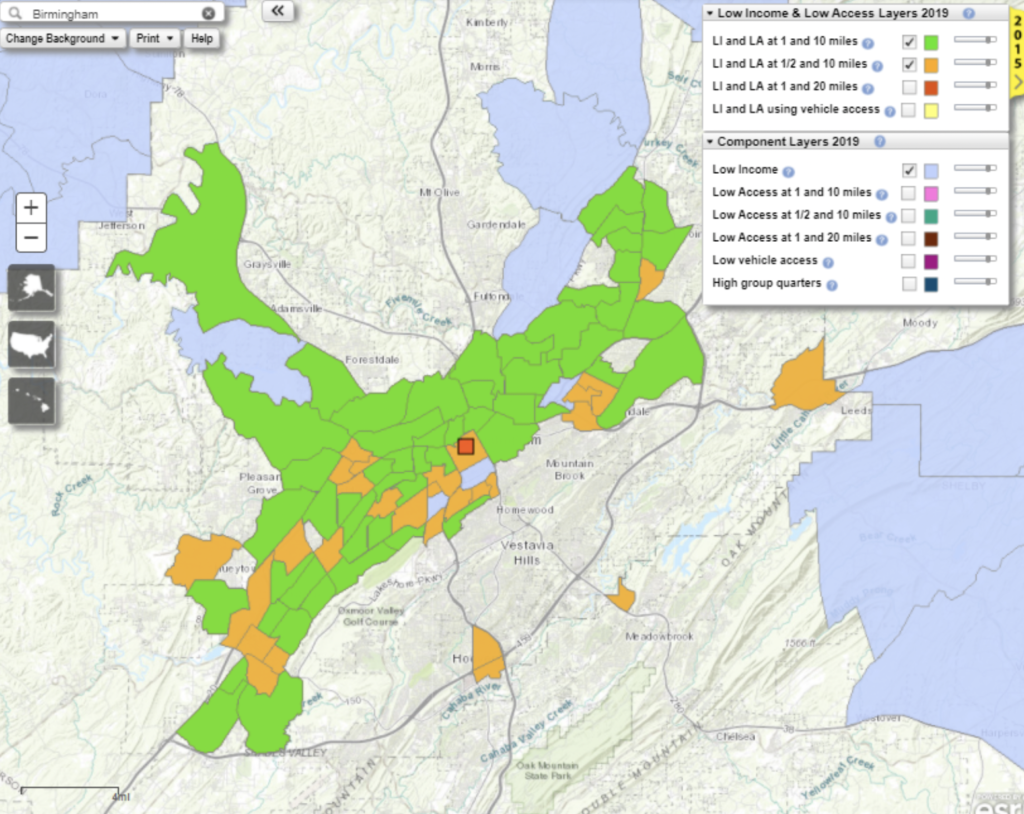
The map below provides a more zoomed-in view of food deserts in Birmingham.
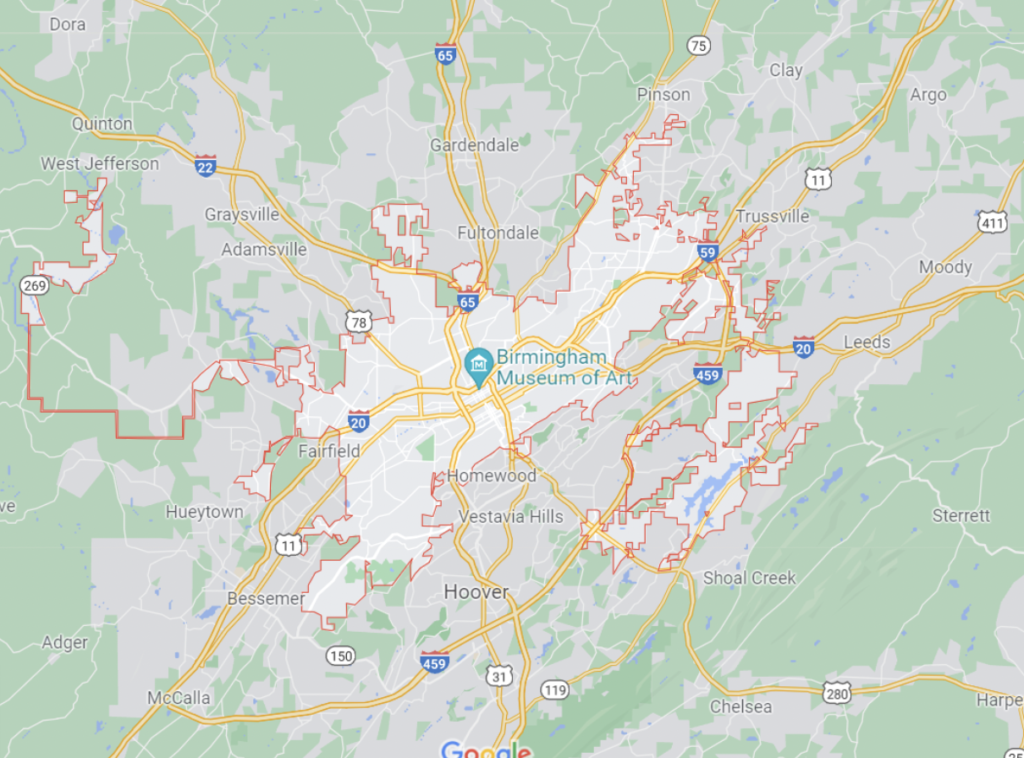

Food deserts occur in areas with few grocery stores. This map shows the unequal distribution of grocery stores in Birmingham. Supermarkets, warehouses, and grocery stores (blue and green dots) are the only stores that offer a wide variety of healthy foods. Areas with none of these stores nearby are food deserts.
Food deserts in Birmingham and the surrounding areas of Jefferson County occur more frequently in Black communities. The map below shows the overlap between communities of color (blue, green, and yellow dots) and food deserts (yellow shading).
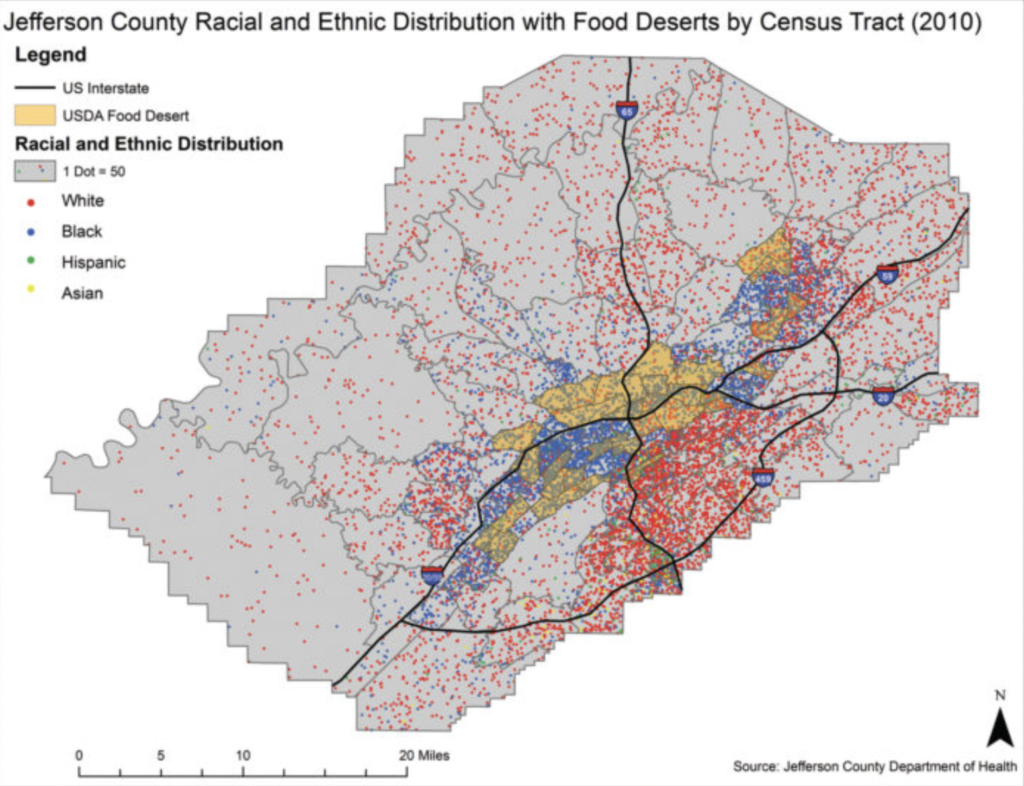
Solutions
The first step in disrupting food deserts in Birmingham is researching where food deserts exist.
Beyond research, multiple collaborative solutions are needed to address food deserts.
Increasing the Number of Grocery Stores
Some efforts have focused on increasing the number of grocery stores within Birmingham. This would help make fresh foods more convenient to residents in food deserts that currently have to travel long distances to grocery stores.
Birmingham’s Mayor Randall Woodfin is actively involved in addressing the problem of grocery store inaccessibility. His 2019 update to the City Council reviews the issue of unequal distribution of grocery stores and provides updates on what his team has done to solve the problem.
Woodfin’s solutions to increasing grocery stores in food deserts include:
- Reaching out to current grocery chain stores to discuss expansion
- Investing in the expansion of a grocery store (Marino’s)
- Commissioning a grocery store study to pitch sites to future store owners
An example of one of these solutions is the Alabama Healthy Food Financing Act, an Alabama law that provides a $50,000 grant to grocery stores opening in food deserts. Several grocery stores have opened in Birmingham as a result of this Act (CPM Solutions Report 2020).
Simply increasing grocery stores is not enough on its own, as even if healthy food is available at grocery stores, people in low-income areas may not be able to afford to buy it. Grocery stores in food deserts must accept federal food assistance programs like SNAP and WIC.
Solutions that focus on decreasing food prices or providing financial assistance must come hand in hand with increased grocery store numbers.
Increased Access To Vehicles And Other Public Transportation Systems
In addition to creating more healthy food options locally, increasing transportation options can help reduce food deserts.
One method to increase transportation to grocery stores is to build up better public transportation. This may include adding a bus stop or even creating a shuttle system within the neighborhood.
Additionally, Lyft ride sharing created the Grocery Access Program to discount the cost of rides to grocery stores. This program has been piloted successfully in Washington D.C. in 2019, and has expanded to several cities since then. A similar program in Birmingham would aid residents of food deserts in accessing inconvenient grocery stores.
Other Solutions
Mayor Woodfin successfully passed an amendment in 2019 to change the city’s zoning ordinances. These changes aim to:
- Make it easier for grocery stores to open in new areas
- Reduce the number of dollar stores
- Allow community gardens to sell their fruits and vegetables onsite
- Allow farmers markets to stay open more frequently
- Increase the number of mobile markets
Other solutions that could help eliminate food deserts in the city of Birmingham include:
- Financial incentives and support for neighborhood-based grocery stores and farmers markets with discounted prices
- Increased financial assistance for residents of food deserts to buy food
- Increased public health education to encourage healthy eating
- Increased urban farming and community gardens
Some of these solutions are already being implemented.
Case Study: Ensley
Ensley is one of several neighborhoods in Birmingham. It’s located west of downtown Birmingham.
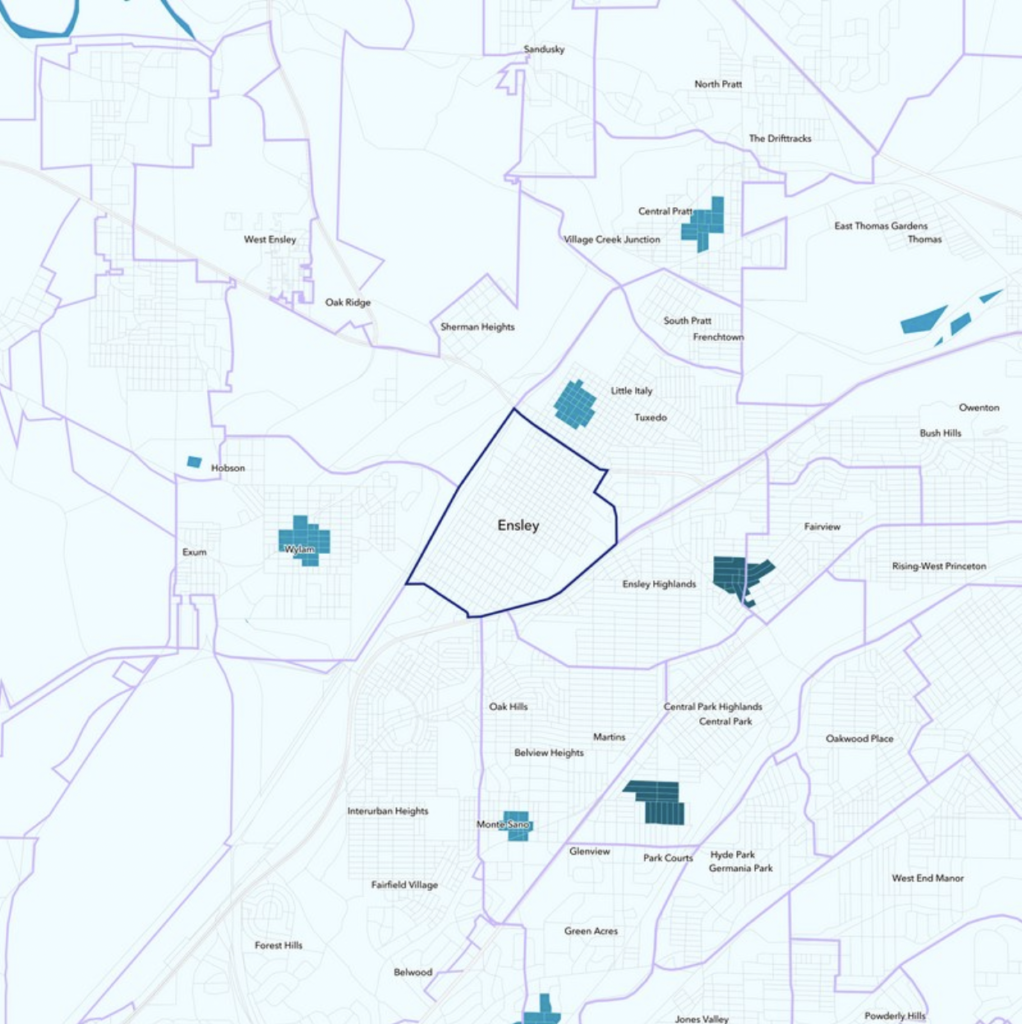
Ensley is considered a food desert. This is due to low access to transportation, few grocery stores, and low-incomes.
Ensley follows the classic characteristics of where food deserts are most commonly found. Compared to the rest of the Birmingham metropolitan area, Ensley has a lower education level, lower income, and a larger non-white community.
- Only 8% of Ensley residents have a Bachelor’s Degree, compared to 27.4% of people in Birmingham.
- The median household income in Ensley is $32,820 compared to $37,375 in Birmingham.
- 92% of Ensley residents are Black compared to 69.9% of Birmingham residents.
(U.S. Census; Niche).
Many solutions have been suggested to increase Ensley residents’ access to healthy food.
One solution that aims to bring fresh food to the neighborhood are programs that help corner store owners buy and sell local produce. For example, the Urban Food Project performed this through their Food to Corner Store project until 2018, when another similar nonprofit took over.
Mobile markets also come to the Ensley, making fresh produce available and accessible to residents. For example, the Community Food Bank of Central Alabama runs a mobile grocery store named The Corner Market that sells meat, dairy, and fresh fruits and vegetables.
Urban farming and community gardening are also becoming more prevalent in Ensley. The Color Project Ensley creates murals and community gardens to bring beauty and fresh food to Ensley.
